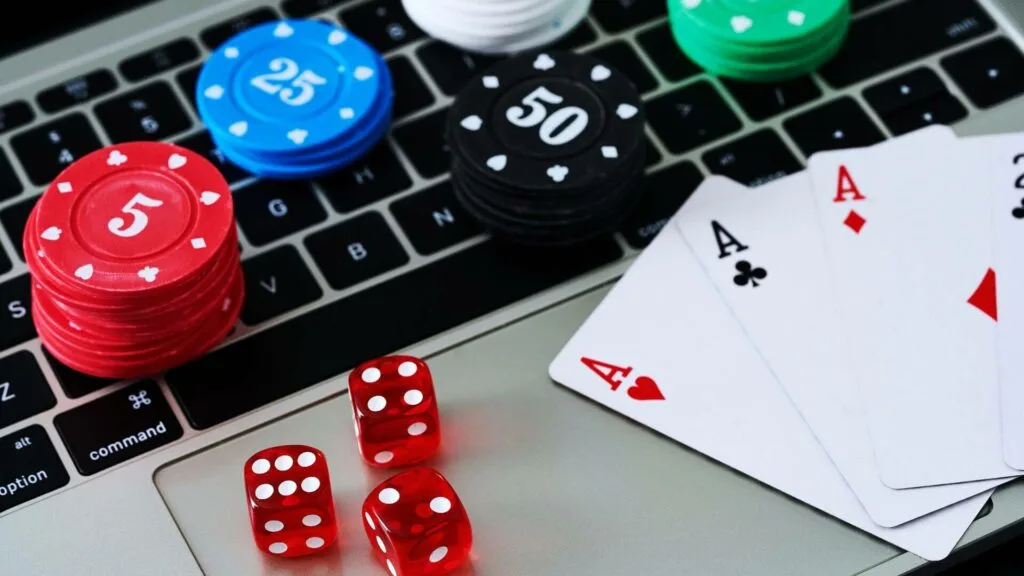The second half is where the real action unfolds! Learn how second-half analysis can help you make smarter, data-driven sports predictions today.
Ever feel like your sports predictions fall short in the second half? That’s because the real game-changing insights happen when you analyze the action as it unfolds. Second-half analysis reveals team fatigue, momentum shifts, and performance trends that can give you the winning edge in sports gaming.

There’s something innately alluring about unpredictability, something that sparks excitement in all of us. It’s that rush, that rush of the unknown, woven into our very nature. Thanks to the rapid advancement of new technology, people are discovering innovative ways to chase excitement.
One of the most dynamic and fast-emerging trends in this space is sports gaming. Just last year, 39% of Americans participated in sports prediction games, staking nearly $120 billion.
If you’ve been in the game long enough but aren’t making substantial progress, it’s time to rethink your approach. In today’s segment, we’ll talk about how to use second-half analysis to your advantage. It’s a highly underrated technique to align your prediction with what’s actually happening in the game instead of shooting in the dark.
The Synergy Between In-game Analysis and Sports Prediction
In-game analytics isn’t new. In fact, coaches and teams have been using data to make split-second decisions for ages. But it’s only recently that technology has made this kind of analysis accessible to sports gamers, all because of real-time data streams and advanced algorithms.
So, what is in-game analysis? It’s the process of studying a game as it unfolds—evaluating player performance, team strategies, and situational factors.
Sports gaming analytics works the same way. It involves using data to predict the outcome of games based on trends and live game dynamics. In any sport, the first half gives you a feel for the game, but it’s the second half where the real action happens.
The beauty of the second half is that it reveals how teams are responding to pressure, which players are stepping up, and whether strategies are shifting. This window of opportunity allows you to make data-backed decisions that capitalize on these changes, giving you a sharper edge over others who rely solely on pre-game predictions.
Up next, we will discuss top strategies and tips to make accurate predictions as the game unfolds.
Community Insights
The outcome is yours, but the process doesn’t have to be done alone. Never underestimate the power of collective wisdom when it comes to spotting trends and making smarter picks.
Social platforms are a goldmine when it comes to second-half analysis. Gamers share real-time insights that you won’t find anywhere else—discussing which players are tiring, how team strategies are shifting, and what trends are emerging in the second half. These communities spot things you might miss.
With the rise of social sportsbook apps, it’s easier than ever to tap into the collective wisdom of others. You can follow live discussions, get the pulse on momentum changes, and adjust your picks on the fly.
Now, if you’re someone who’s just starting out or prefers a more low-pressure approach, Rebet recommends trying no-purchase sports games. Look for platforms that offer virtual currency to place picks. Here, you can challenge friends, discuss strategies with fellow gamers, and refine your skills without the stress of real money on the line.
Plus, you get to track your progress and see how well your picks align with the crowd’s insights.
The First Half Anomaly Detection
In the first half, look for signs that don’t match up with a team’s usual performance. For example, if a team is shooting way above their season average, it’s a clear red flag. Teams rarely keep up high shooting percentages for long, so expect a drop-off as the game goes on.
Unusual turnover rates are another thing to keep tabs on. If a team is handing the ball over too often, it could implicate trouble down the line, especially if they’re struggling to maintain control or keep up with pressure.
Also, check in on star players. If a key player is scoring much more or less than their average, mark them down. Fatigue or defensive adjustments could impact their performance in the second half.
Free throw attempts can also reveal a lot. If one team is getting far more attempts, it could show an imbalance in aggression or fouling, both of which can change in the second half.
Pro tip: If a team is shooting 20% above their season average in the first half, expect a significant regression in the second half. Spotting these anomalies gives you a clearer picture of what’s about to come.
The Momentum vs. Fatigue Assessment
Fatigue assessment is the secret trick many top sports gamers use to get ahead in the second half. As the game wears on, fatigue creeps in—and if you’re paying attention, you’ll notice the signs. Players start moving slower, missing easy shots, and looking less sharp. This is your cue to reassess your picks.
Start by tracking which team used more timeouts in the first half. If one team is burning through timeouts early, assume that they’re already dealing with fatigue or struggling to adjust to the game.
Also, keep an eye on key players who are in foul trouble or showing obvious signs of exhaustion. These players are at higher risk of underperforming as the game progresses.
If it’s a back-to-back game, like in the NBA or NHL, note which teams played the night before. Fatigue from the previous game can catch up with them in the second half.
Finally, look for signs of successful offensive or defensive adjustments. If a team is making effective changes, it could give them a second wind.
Extra tip on the side: Quite often, the team that uses most of their timeouts early and has starters with high minutes struggles in the second half. Keep these insights in mind to make calculated predictions in the second half.
Turn Insights into Wins in the Second Half
Now you’ve got the resources to read the game like a pro. Use second-half analysis to spot fatigue, detect anomalies, and adjust your picks in real time. Stay sharp, keep an eye on the shifts, and let data guide your decisions. The second half is where the real action happens—so make it count!

Jessi is the creative mind behind The Coffee Mom, a popular blog that combines parenting advice, travel tips, and a love for all things Disney. As a trusted Disney influencer and passionate storyteller, Jessi’s authentic insights and relatable content resonate with readers worldwide.
